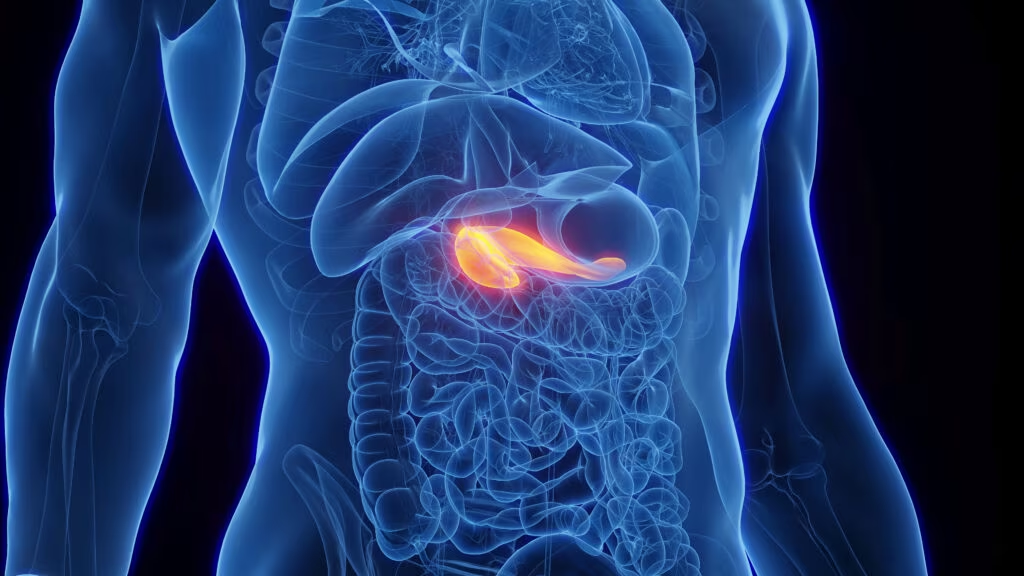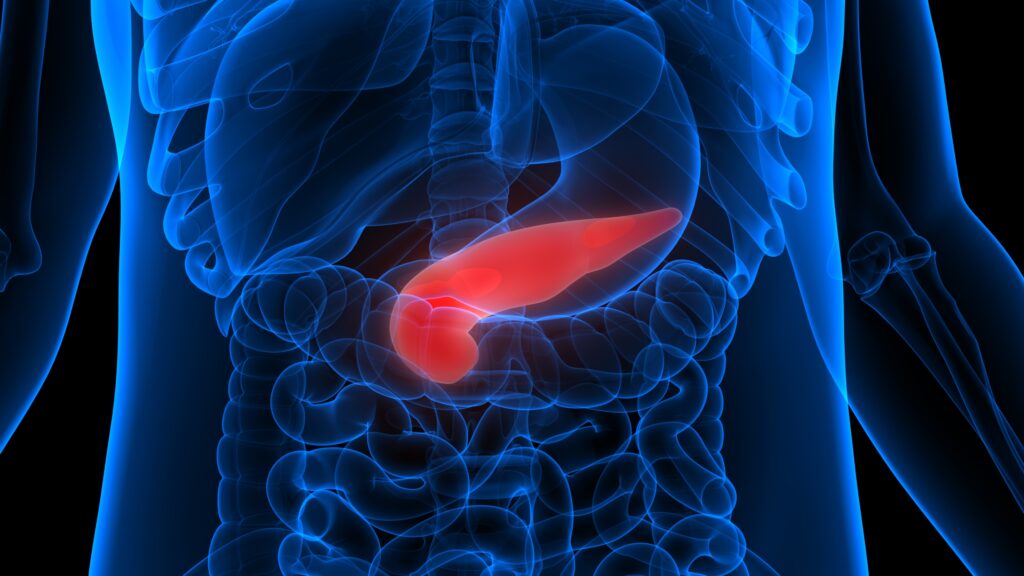There is an increased risk of bone fractures in patients with type 2 diabetes. Some—although not all—studies have shown higher rates of fracture in people with type 2 diabetes compared with normal individuals. The Health, Aging, and Body Composition (Health ABC) Study showed that elderly white women with type 2 diabetes (but not elderly men or black women) had more rapid bone loss at the femoral neck and total hip than those with normal glucose homeostasis.4 This was despite having higher bone mineral density (BMD) at baseline.
There is an increased risk of bone fractures in patients with type 2 diabetes. Some—although not all—studies have shown higher rates of fracture in people with type 2 diabetes compared with normal individuals. The Health, Aging, and Body Composition (Health ABC) Study showed that elderly white women with type 2 diabetes (but not elderly men or black women) had more rapid bone loss at the femoral neck and total hip than those with normal glucose homeostasis.4 This was despite having higher bone mineral density (BMD) at baseline. These data suggest that elderly white women with type 2 diabetes are at a greater risk of hip fracture than the normal population and more so than men or black women with the disease. There is already a higher prevalence of fracture risk in the elderly population as a whole and bone loss could put older patients with type 2 diabetes at an even higher risk of fracture.
Data from the Study of Osteoporotic Fractures reported by Taylor et al.5 showed that although hip BMD is strongly related to hip fracture risk in elderly white women, there are a number of other clinical risk factors that are independent predictors of long-term risk (e.g. more frequent falls, poor balance, diabetes complications, etc.). This is an important consideration when assessing risk in diabetes patients and suggests that a wider viewpoint should be embraced.
Lipscombe et al.6 examined the risk of hip fractures among elderly men and women with type 2 diabetes using population-based Ontario healthcare data. They showed that fracture risk is increased in both men and women with type 2 diabetes compared with normoglycemic individuals, despite a higher BMD in the diabetes group.
TZDs have been reported to cause bone loss in some rodent models,8-9 but information is scarce regarding their effect on human BMD. Schwartz et al.3 carried out a further analysis of the four-year follow-up data from the Health ABC Study to determine whether the use of TZDs is associated with changes in BMD in older adults with type 2 diabetes. Their findings indicated that TZDs may cause bone loss at the whole body, lumbar spine, and trochanter in older women, but not in men. Ethnic differences were not examined. Since bone loss is a potent predictor of fracture risk, TZD use may be associated with an increase in burden on skeletal health in a population that already has a higher risk of fracture.
Conversely, the existence of a relationship between type 1 diabetes and low bone mass compared with normoglycemic subjects is well established.10-12 In patients with recent-onset type 1 diabetes bone loss may be due to the absence of the anabolic effects of insulin, and in patients with long-term disease vascular complications may contribute to low bone loss and fracture risk. Impaired glucose function is detrimental to bone metabolism and this may be the cause of the decrease in BMD and the increased risk of fractures associated with the disease.
Most published studies have focused on patients who have been suffering from type 1 diabetes for many years and already have disease complications. A study by Lopez-Ibarra et al.11 focused on the status of BMD and bone remodeling factors in 32 subjects at the time of diagnosis. They showed that a high percentage of patients with type 1 diabetes already had a loss of both cortical and trabecular bone at outset, indicating that it cannot be a late complication of the disease. The BMD values did not correlate with bone remodeling markers, HbA1c values, or immunological variables. It can be assumed that cell destruction and insulinopenia begin well before the clinical onset of the disease. This was a small study that needs confirmation with larger numbers of subjects.
Campos-Pastor et al.10 investigated the possible effects of poor metabolic control and diabetes evolution time on bone loss in a group of 62 type 1 diabetes patients (previously classified as normal, osteopenic, or osteoporotic) before and seven years after starting intensive insulin therapy. The overall outcome of the study was a stabilisation of BMD at all sites, a significant increase in body mass index (BMI)—which could help to stabilize BMD—and a reduction in HbA1c values and bone resorption parameters. Improvement in metabolic control may therefore contribute to the stabilization of bone mass and allay the progression of osteopenia. However, despite intensive insulin therapy, those patients with retinopathy had a reduced BMD and higher HbA1c values than those without retinopathy, suggesting an association between bone loss and poor metabolic control in type 1 diabetes.
Vestergaard13 used meta-analysis to investigate differences between type 1 and type 2 diabetes with respect to BMD and fracture risk. Hip fracture risk was shown to be increased in both type 1 and type 2 diabetes compared with individuals without diabetes. The increase in relative hip fracture risk was significantly higher in type 1 than type 2 diabetes patients. BMD was decreased in the spine and hip in type 1 diabetes patients and increased in the spine and hip in type 2 diabetes patients. A meta-regression showed that BMI was a major determinant for BMD in both the spine and the hip.
Insulin is an anabolic hormone and patients with type 1 diabetes are insulindeficient, whereas type 2 diabetes is due to a decrease in sensitivity to insulin in peripheral tissues. As a result, there may be an excess of insulin. Animal models have shown that although bone density is increased in
diabetes, bone structure is more fragile. Hyperglycemia causes an alteration in the glycosylation of collagen, producing advanced glycosylation endproducts (AGEs) and their receptors (RAGEs), which affect bone metabolism and increase bone fragility. Complications of diabetes may also contribute to fracture risk, especially in patients with neuropathy. Alternatively, diabetes may be associated with an increase in the likelihood of falls and other traumas.
Evidence from Animal Studies
The TZDs are high-affinity synthetic ligands of the peroxisome-proliferatorsactivated receptor-γ (PPAR-γ),14-15 the activation of which alters the transcription of genes involved in glucose uptake, glucose utilization, and lipid metabolism. PPAR-γ, which belongs to a family of nuclear receptor transcription factors, occurs as two isoforms: PPAR-γ1, which is expressed in many cell types (including adipocytes, osteoblasts, muscle cells, and macrophages) and PPAR-γ2, which is specific for adipocytes.
The PPAR-γ2 receptor is known to play a role in marrow adipocyte differentiation and fat deposition and appears to be critical for the regulation of osteoblast and adipocyte differentiation from common mesenchymal stromal cell/stem cell bone marrow progenitors.8 PPAR-γ is a positive regulator of marrow adipocyte formation and a negative regulator of osteoblast development. In vivo, an increase in PPAR-γ activity leads to bone loss and a decrease in activity leads to increased bone mass. In the presence of PPAR-γ, rosiglitazone converts cells of the osteoblast lineage to adipocytes and simultaneously suppresses the osteoblast.16-17
TZDs have been reported to cause bone loss in some rodent models.8-9 The effect of rosiglitazone on mouse bone has been the subject of a number of studies in vivo. Rzonca et al.8 treated six-month-old male nondiabetic C57BL/6 mice for seven weeks with rosiglitazone and demonstrated a significant decrease in total body BMD. Analysis of the micro-architecture of the bone showed changes in bone morphology and structure that were accompanied by changes in the expression of osteoblast- and adipocyte-specific marker genes. The authors concluded that their findings indicate that mouse bone marrow is a target for rosiglitazone and that rosiglitazone therapy may affect human bone and be a risk for adverse skeletal effects in type 2 diabetes patients who are prescribed TZDs.
Another in vivo study by Soroceanu et al.18 also demonstrated that rosiglitazone treatment affected bone loss in a mouse model. It was shown that rosiglitazone-treated mice had increased weight compared with controls but no significant alteration in serum glucose levels, calcium, or parathyroid hormone. The BMD of rosiglitazone-treated mice was lower at the lumbar vertebrae, ilium/sacrum, and total body compared with controls. Trabecular bone in the treated animals was decreased, marrow space was increased, and there was no significant change in bone marrow adipocity. It was concluded that the imbalance in bone remodeling caused by rosiglitazone treatment was due to increased apoptotic death of osteogenic cells and reduced bone formation, leading to a decrease in trabecular bone volume and BMD.
In contrast, Sottile et al.9 investigated the impact of rosiglitazone treatment on bone tissue of intact and ovariectomized skeletally mature female rats and showed no change in bone mass or fat marrow volume in intact rats treated for eight weeks with rosiglitazone. However, rosiglitazone administered for 12 weeks to ovariectomized rats enhanced bone loss and increased fat marrow volume compared with vehicle-treated ovariectomized controls. Osteoblast number was similar in both groups. Bone resorption parameters were increased and enhanced bone loss was present in the tibia, femur, and lumbar spine of the ovariectomized treated rats. Thus, the researchers showed no effect of rosiglitazone on bone loss in intact rats, but suggested that TZDs may enhance bone loss induced by oestrogen deprivation.
The cellular basis underlying the response of the skeleton to rosiglitazone was investigated by Ali et al.,19 who showed that adult mice receiving rosiglitazone experience bone loss characterized by an increase in marrow adipocytes, a decrease in the osteoblast/osteoclast ratio, and a reduction in wall width and bone formation rate. They also showed that rosiglitazone diverted bipotential mesenchymal progenitors from the osteoblast to the adipocyte lineage and suppressed the differentiation of monopotential osteoblast progenitors. Bone loss caused by rosiglitazone is due at least in part to a reduction in the differentiation of osteoblasts from early progenitors.
The ADOPT Trial
The ADOPT (A Diabetes Outcome and Progression) trial was a multicenter, randomized, double-blind, parallel-group study of 4,360 patients with recently diagnosed type 2 diabetes.20 It examined the efficacy of monotherapy with rosiglitazone, metformin, or glyburide as an initial treatment for maintaining long-term glycemic control in this group. The patients were followed for a period of 4-6 years, thus comparing three commonly used antidiabetic drugs over an extended time period. The represented a risk reduction of 32% for rosiglitazone compared with metformin and 63% compared with glyburide. Thus, according to this trial, initial treatment of type 2 diabetes with rosiglitazone (over a median fouryear period) slowed progression to monotherapy failure more effectively than either metformin or glyburide. Rosiglitazone was, however, associated with a higher risk of cardiovascular events than glyburide and with more weight gain and edema than either metformin or glyburide, but with fewer gastrointestinal events than metformin and less hypoglycemia than glyburide.
Further examination of the ADOPT data by Kahn et al. showed that women treated with rosiglitazone suffered more fractures than those receiving metformin or glyburide (9.3% versus 5.1% and 3.5%, respectively). The fractures were mainly of the upper arm, hand, or foot, which are different sites from those seen with postmenopausal osteoporosis, which involve the hip or spine. Among male patients, the observed incidence of fractures was similar within the three treatment groups. Fractures of the hip or spine were low in women patients and similar within the three treatment groups. As a result, GlaxoSmithKline, in consultation with Health Canada, sent a letter to healthcare professionals to inform them of these findings (available at: http://www.fda.gov/medwatch/safety/2007/Avandia_GSK_Ltr.pdf).
It is essential to maintain near-normal glycemia in type 2 diabetes patients in order to reduce the risk of long-term complications, but the progressive nature of the disease, mainly due to declining β-cell function, makes this goal difficult to achieve and generally requires the use of increased drug dosage, combination therapies, or insulin. In the ADOPT trial, rosiglitazone slowed the decline in β-cell function and improved insulin sensitivity compared with metformin and glyburide, which indicates that TZDs may provide more effective treatment in the early stages of type 2 diabetes; however, the potential risk of bone fractures associated with their use, particularly in women, may outweigh their benefits. Healthcare professionals should therefore take into account the risk of fracture, particularly when initiating treatment of women with type 2 diabetes with rosiglitazone.
Emerging Evidence from Randomized Controlled Trials
Since TZDs are used with increasing frequency to treat type 2 diabetes, it is important to know whether these drugs cause bone damage in this group of patients, but at present the available information is only observational.
Grey et al.21 set out to determine whether rosiglitazone had adverse skeletal effects in healthy postmenopausal women. The study was a randomized, double-blind, placebo-controlled study of 14 weeks involving 50 healthy post-menopausal women. The primary end-points were two specific markers of bone formation (procollagen type I N-terminal peptide (PINP) and osteocalcin) and secondary end-points were a bone resorption marker (β-C-terminal telopeptide, βCTX) and BMD. PINP and osteocalcin in the women taking rosiglitazone fell by 13 and 10%, respectively, compared with placebo treatment. These changes were evident at four weeks and continued for the duration of the study. There was, however, no change in the bone resorption marker βCTX (p=0.9 versus placebo). Total hip BMD decreased in the group receiving rosiglitazone. The mean changes from baseline were: rosiglitazone -1.9%; placebo 0.2%; between-group difference 1.7%; 95% confidence interval (CI) 0.6-2.7 (p<0.01). Lumbar spine density fell from baseline values in the rosiglitazone group (p=0.02 versus baseline) but was not significantly different between groups (mean change from baseline for rosiglitazone was -1.2%; placebo -0.2%; between-group difference 1.0%; 95% CI -0.2-2.3 (p=0.13).
Thus, short-term therapy with rosiglitazone inhibits bone formation and accelerates bone loss, thereby causing damaging skeletal effects in healthy post-menopausal women. Since patients with type 2 diabetes may have an increased risk of bone fractures, the possibility that TZDs may increase the risk is important. The authors suggest that skeletal end-point markers should be included in any future long-term studies of TZD therapy.
Summary and Discussion
Type 2 diabetes patients are at increased risk of fracture despite having a higher BMD than individuals with normal glucose metabolism. Elderly white women appear to be more at risk than men or black women. The TZD rosiglitazone is an effective and commonly prescribed treatment for type 2 diabetes, but early evidence suggests that it may lead to bone loss and fractures, particularly of the hip, in elderly type 2 diabetes patients. Analysis of data from the ADOPT trial showed that although rosiglitazone was the more effective drug in maintaining glycemic control, its use was associated with more fractures than treatment with either metformin or glyburide. The fracture sites differed from those seen with postmenopausal osteoporosis and in other reported studies w
ere the hip was the main fracture site. Thus, inconsistencies exist that should be investigated further.
There have been no large specifically designed clinical studies to address the relationship between TZDs and fracture risk in type 2 diabetes patients. Furthermore, in the observational studies so far, only rosiglitazone has been considered. It is now essential to design and implement randomized clinical trials to test whether TZDs affect bone metabolism and cause fractures in type 2 diabetes patients and to investigate whether choice of drug, age, gender, and ethnicity are important. In elderly people, particularly women, there is an increased risk of fracture from, for example, falls, poor balance, and visual impairment, and these factors should be assessed in the context of the trial. Since most studies so far have focused on elderly patients, trials with younger patients are paramount.
The evidence from animal studies suggests that rosiglitazone therapy might pose a significant risk to human bone and opens up the possibility of developing selective antidiabetic PPAR-γ agonists without adverse effects on bone.
The global prevalence of diabetes in 2000 was estimated at approximately 170 million and is predicted to double by 2030.22 Thus, even a small increase in hip fracture risk among diabetes patients will have a significant financial impact on healthcare provision.
Healthcare professionals need to be informed of the potential risk of prescribing TZDs to type 2 diabetes patients and these patients should be carefully monitored during the progress of their treatment.














